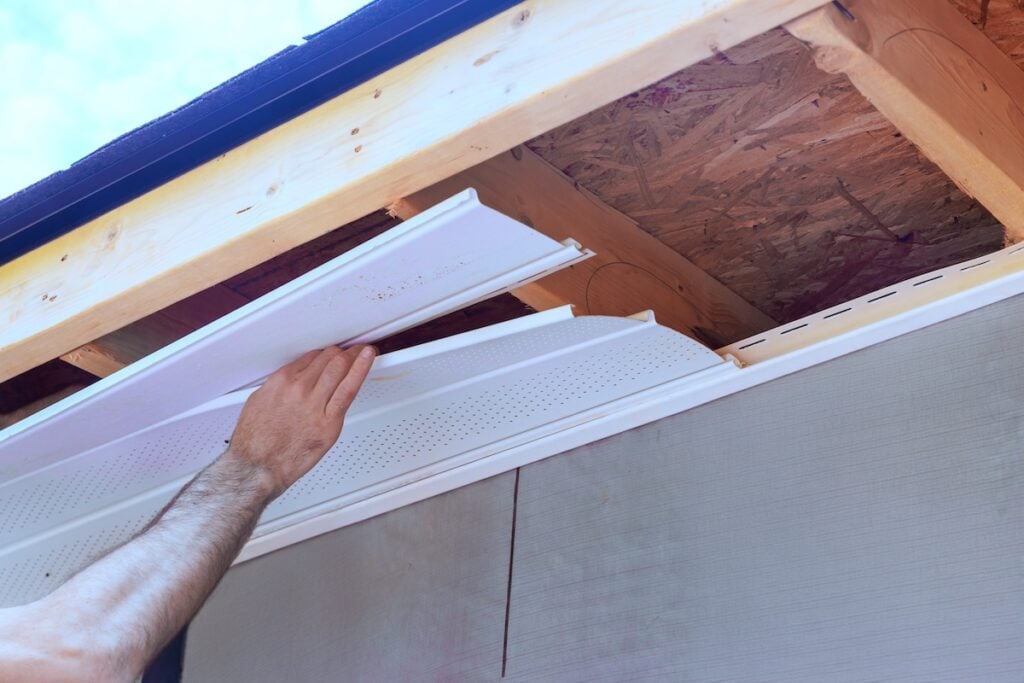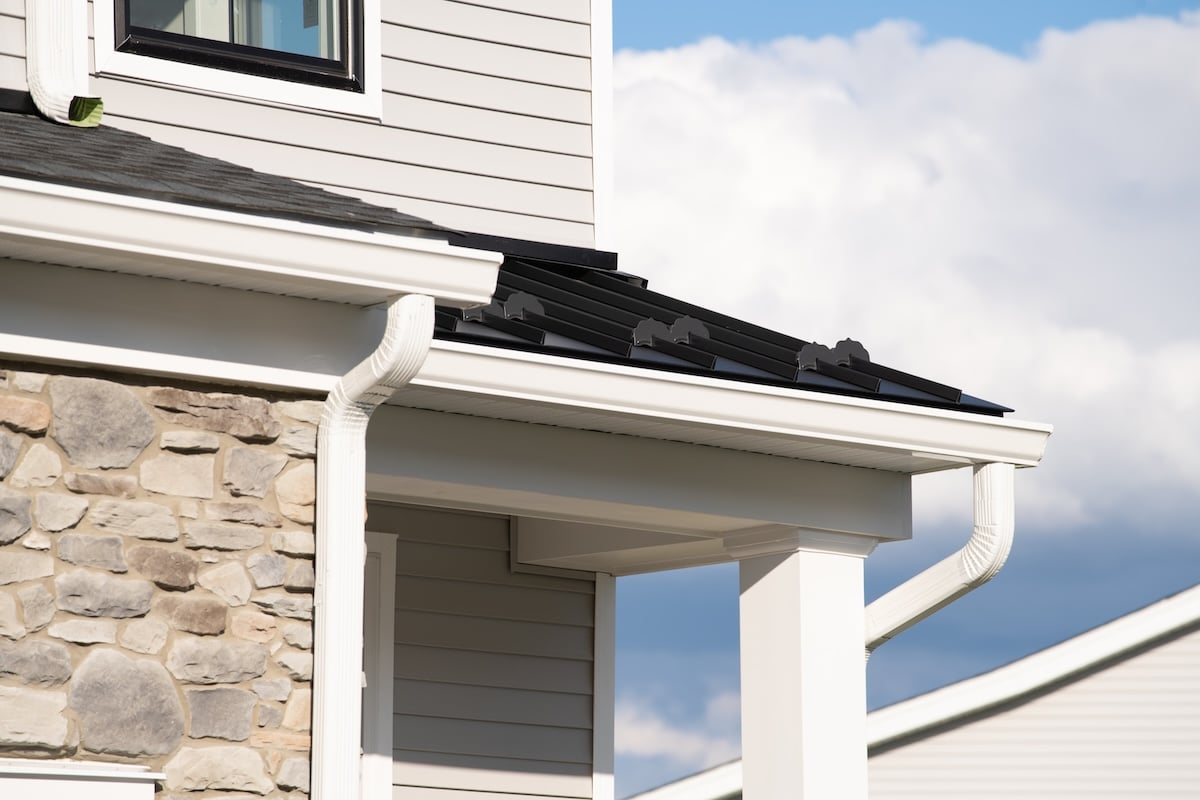What Is Roof Overhang & How To Extend It
A roof overhang is more than just an architectural detail—it plays a key role in protecting your home’s structure and improving energy efficiency. Whether you’re planning a new build or upgrading your existing roof, understanding your roof overhang and how to extend it can make a noticeable difference in performance and appearance.
- Water protection: An extended overhang can shield your siding, windows, and doors from rain.
- Energy efficiency: Proper overhangs help regulate indoor temperatures by providing shade in summer.
- Curb appeal: Visibly larger overhangs can create a more balanced, upscale look for your home.
Let’s dive into what roof overhangs are, why they matter, and what options you have if you’re thinking about extending yours.
🏠 What Is a Roof Overhang?
A roof overhang is the portion of the roof that extends past the exterior walls of a home. It’s designed to direct water away from the foundation, provide shade, and reduce weather-related wear on your siding and windows.

Common Types of Roof Overhangs
There are a few different types of overhangs, each offering unique advantages depending on your climate and architectural style.
- Eaves: These are the most common type of overhang, found on sloped roofs, and help with water runoff and sun protection.
- Soffits: The underside of the eaves, which can be vented to promote attic airflow and prevent moisture buildup.
- Rakes: Found on gable ends, these are angled overhangs that help protect the sides of the roof from wind and rain.
Standard Roof Overhang Dimensions
Most residential roof overhangs range from 12 to 36 inches, depending on architectural design, climate, and roof style. In areas with heavy rainfall or intense sunlight, longer overhangs are often preferred for added protection and energy benefits.
❗️ Why Roof Overhangs Matter
Even a small overhang can offer big advantages when it comes to protecting your home. Here’s why you shouldn’t overlook this feature.
Moisture Control
A properly sized roof overhang helps prevent rainwater from splashing against your siding and pooling near your foundation. This reduces the risk of mold, mildew, and foundation damage.
UV and Heat Protection
Overhangs can significantly reduce the amount of direct sunlight that enters your windows, especially on south- and west-facing walls. This helps keep your home cooler and lowers energy costs during summer.
Structural Longevity
Extended overhangs shield your trim, siding, and window frames from harsh weather, helping these components last longer and reducing maintenance costs.
✅ 5 Ways To Extend Your Roof Overhang
If your current overhang is too short or nonexistent, there are several options to extend it. Below are five practical methods to consider, each with its own benefits and considerations.

1. Extend the Rafters
- Framing extension: Your roofing contractor can add to the existing rafters to lengthen the overhang.
- Blended appearance: This method creates a seamless look when matched to your original roof design.
- Best for: Homes undergoing a major remodel or new roof installation.
2. Install Roof Extensions (Lookouts)
- Support brackets: These horizontal boards project from the wall to hold an extended portion of the roof.
- Design flexibility: Offers customization options for depth and angle of the overhang.
- Best for: Modern or craftsman-style homes that benefit from architectural details.
3. Use Metal or PVC Overhang Kits
- Pre-engineered solutions: Kits made of metal or durable PVC can be added without altering roof framing.
- Quick installation: Ideal for homeowners looking for a lower-cost, fast solution.
- Best for: Minor extensions on flat or slightly sloped roofs.
4. Add a Roof Awning or Shade Structure
- Independent system: These are mounted just below the roofline and act like extended overhangs.
- Custom materials: Can be built with metal, polycarbonate, or fabric depending on your needs.
- Best for: Homeowners wanting shade without modifying their main roof.
5. Rebuild the Roofline
- Major overhaul: This method involves changing the pitch or layout of your roof to incorporate a larger overhang.
- Long-term value: Can dramatically improve energy efficiency and architectural style.
- Best for: New construction or full roof replacement projects.
👉 Pros and Cons of Extending Your Roof Overhang
Before committing to any changes, it’s helpful to weigh the benefits and trade-offs involved.

Advantages of a Larger Overhang
- Better weather protection: Keeps more rainwater and snow away from your home’s foundation.
- Improved insulation: Offers passive cooling benefits in warmer months.
- Aesthetic boost: Adds depth and dimension to your roofline and overall home appearance.
Considerations Before Extending
- Cost factor: Extending overhangs, especially structural ones, can add to labor and material costs.
- Permit requirements: Some municipalities may require a permit, especially if structural changes are involved.
- Compatibility: Not all roof types are easy to modify without affecting the overall design or load-bearing calculations.
⭐️ Should You Extend Your Roof Overhang?
Extending your roof overhang isn’t always necessary, but in the right circumstances, it can be a smart investment. Homes in regions with heavy rain, intense sun, or high humidity often benefit the most. If your siding shows signs of water damage, or your energy bills are higher than expected due to heat gain, a roof overhang extension might be the right move.
When To Consider an Extension
- Frequent water damage: If water often runs down your walls or pools near your foundation.
- Excessive sun exposure: Especially for homes with large south-facing windows.
- Aesthetic updates: To balance your home’s proportions or enhance curb appeal.
🤝 Work With a Roofing Contractor You Can Trust
If you’re considering a roof overhang extension, partnering with a knowledgeable roofing contractor is essential. This isn’t a DIY-friendly project—it requires understanding your home’s structural design, climate conditions, and roofing material compatibility. An experienced team can evaluate your current setup and recommend the safest, most effective way to extend your overhang.
- Custom consultation: A roofing professional will assess your home and suggest the right overhang size for function and style.
- Code compliance: Experts will ensure the work meets local building codes and structural safety standards.
- Integrated upgrades: Overhang extensions can often be bundled with roof repairs or full replacements to save on cost.
👍 Extend Your Roof Overhang With Confidence
A well-designed roof overhang does more than look good—it protects your home, improves comfort, and extends the lifespan of your siding and foundation. If you’re considering an extension, One Way Roofing has the experience and craftsmanship to guide you through the process from start to finish.
Want to find out if a roof overhang extension makes sense for your home? Contact One Way Roofing today for a free inspection and personalized recommendation.

